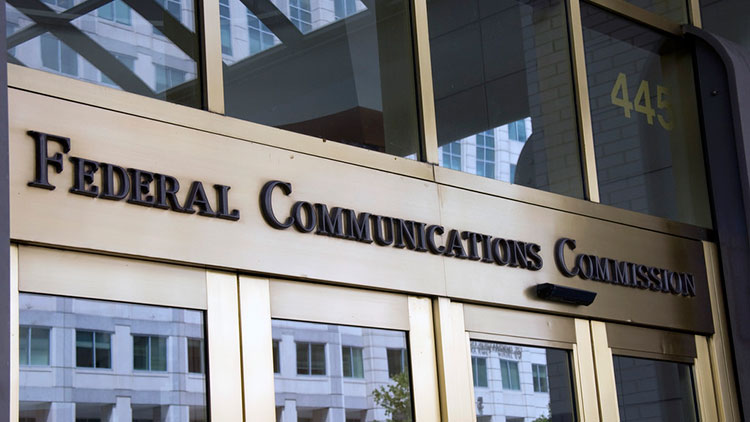FCC Won't Exclude ATSC 3.0 Signals From Retrans Deals

FCC Chairman Ajit Pai has circulated the draft framework for the ATSC 3.0 rollout to the other commissioners, with a plan to vote on it at the Nov. 16 meeting. If so, that will be a double celebration for broadcasters since it is also the date the FCC plans to vote on major broadcast deregulation.
Broadcasters will also be celebrating the FCC's decision not to exclude ATSC 3.0 signals from retrans negotiations, though the mandatory simulcasts of old and new transmission standards must be essentially the same, which MVPDs had pushed for.
The standard is still years from a widespread rollout, but the countdown begins Nov. 16 if the item is approved as expected.
It is not backward compatible, so broadcasters will have to simulcast in the current 1.0 during the transition. To do that they must team up with another station, with one doing both ATSC signals and the other both ATSc. MVPDs must continue to carry ATSC signals but don't have to carry the new 3.0 signals.
But broadcasters will have a chance to make a case for flash-cutting to ATSC 3.0 rather than simulcasting, and Low Power TV's will be allowed to flash cut without simulcasting.
ATSC 3.0 is the new broadcast transmission standard that will allow TV stations to do video on demand, other interactive services, provide 4K video, and more.
That the FCC was going to approve the voluntary rollout was not much in doubt, but how it did it contained a complete skeleton's worth of bones of contention between broadcasters and MVPDs, including what had to be simulcast, how the signals had to be carried, and whether they could be part of retrans negotiations.
Broadcasting & Cable Newsletter
The smarter way to stay on top of broadcasting and cable industry. Sign up below
The FCC order divvies up the wins and losses.
MVPDs had wanted the FCC to mandate that the simulcasts be essentially identical, while broadcasters wanted more flexibility. The FCC concludes that "the programming must be the same, except for programming features that are based on the enhanced capabilities of ATSC 3.0, advertisements, and promotions for upcoming programs."
It bakes the A/322 modulation standard into the rollout, which the Consumer Technology Association had said was vital, but the mandate would only apply to the broadcaster's primary signal and would sunset after five years, though the FCC could extend it if necessary. That standard allows broadcasters to balance tradeoffs between signal robustness and data capacity.
The item also proposes to "subject" the next gen ATSC 3.0 signal to the same public interest obligations as currently apply to ATSC 1.0, and to require TV stations to notify their viewers in advance of deployment and/or simulcasting.
There is an accompanying Notice of Proposed Rulemaking that seeks comment on exceptions and waivers related to the requirement that stations must partner, on whether to allow broadcasters to use vacant channels in the TV band, and the tentative conclusion that simulcasting should not change the significantly viewed status of next gen TV stations for the purpose of cable and satellite carriage.
As with most FCC issues these days, there is even a Sinclair angle to the ATSC 3.0 rollout story. The company owns a handful of patents related to ATSC 3.0 and has long advocated for the advanced standard.
The FCC voted unanimously back in February to propose approving the rollout of the new standard.
The draft order is just that, a draft, and could change before the vote, though it is expected to remain essentially in this form.
“This is a draft Regulatory Trifecta: Significant win for consumers. Major advancement for broadcasters. Powerful jolt for competition," said Jerald Fritz, EVP, ONE Media, the Sinclair spin-off company pushing for the advanced standard (Sinclair was a pioneer advocate an advanced, mobile, broadcast transmission standard).
"Viewers will greatly benefit from access to free-mobile television, spectacular quality enhancements, programming targeted to their unique needs and enhanced emergency information available nowhere else. And broadcasters now have a data pipe that can bolster their competitive positions against other media and provide a host of new competitive business opportunities.
"Without a second channel to speed deployment, the Commission has fashioned a voluntary path where no consumer will need to purchase new equipment unless he or she wants to – retaining what is available today. But the Commission also builds incentives for broadcasters to entice consumers with new programming, services and equipment if they want it. That’s a clear consumer and regulatory win without the imposition of heavy-handed regulation.
We look forward to a final Commission vote to adopt this draft fully and finally.”
Contributing editor John Eggerton has been an editor and/or writer on media regulation, legislation and policy for over four decades, including covering the FCC, FTC, Congress, the major media trade associations, and the federal courts. In addition to Multichannel News and Broadcasting + Cable, his work has appeared in Radio World, TV Technology, TV Fax, This Week in Consumer Electronics, Variety and the Encyclopedia Britannica.

